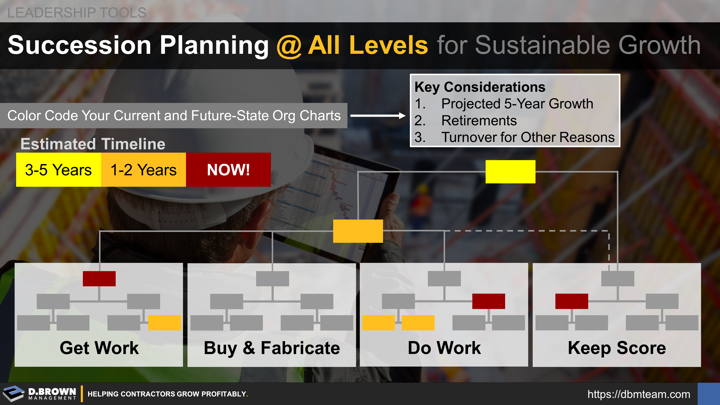Consider:
- It is a tight labor market. Assume that someone will leave for what they perceive to be a better opportunity elsewhere.
- Talent development isn’t a perfect science. Assume that at least half the people you identify as high-potentials won’t make it. The problem is you just don’t know which half. Better to develop too many good people than not enough.
- Some of the people in the current role will have to be moved into other roles as the organization grows, meaning they have to backfill their role as well as the roles opened up due to growth.
Remember that even if you are in a role like President, as the company doubles in size, your key responsibilities will have to be split into newly created roles in the company. You will need to be grooming others for those roles while considering succession in the future. Focus changes with growth even for those in the same role.
Don’t worry about over-investing and developing too many good people. We have NEVER been called in to help a contractor solve the problem of having too much great talent around and not enough work for them.
Learn more about mastering role transitions in the construction industry.
Looking strategically at your organizational structure and talent development is where an experienced third party can be very helpful.

